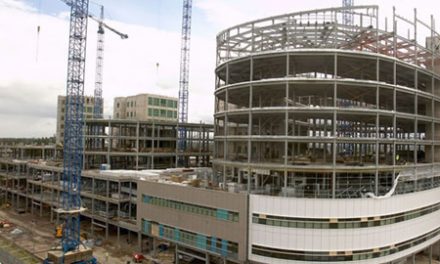
Property prices expected to remain in the red – Economist

In the latest FNB Residential property report author Ruusa Nandago, FNB Group Economist states, that the FNB House Price Index plunged further into negative territory at the end of September 2019, reaching a historic low of 5.1% y/y compared to 2% recorded over the same period last year.
“The deeper contraction in the third quarter reflects elevated demand side risks emanating from subdued household income and confidence. While positive price growth was recorded in the Central and Southern regions, further gains were capped by contractions observed in the Coastal and Northern regions,” she said.
According to the research, the average price for a house at the end of September was N$1,120,805. The volume index recorded growth of 0.2% y/y at the end of September 2019. The small segment recorded growth of 10.3% y/y but this was almost entirely offset by contractions in the medium, large and luxury segments of 27.2% y/y, 38.9% y/y and 58.3% y/y respectively.
Furthermore, the small segment made up 83% of all housing transactions, followed by the medium segment which made up 15%, the large segment which made up 2% and the luxury segment which made up 0.4% of all transactions.
“This confirms our earlier view that demand has shifted to and will remain concentrated in the small segment,” she added.
In the Central part of the country, property prices showed positive growth for the first time since February 2018. The price growth at the end of September was recorded at 3.8% y/y compared to a contraction of 4.7% recorded over the same period last year. A house in the Central region is now priced at N$1,466,000. Across major municipalities the average price of a town at the end of September was N$637,000 in Gobabis, N$745,000 in Okahandja, and N$ 1.2 million in Windhoek.
The Coastal region once again recorded the poorest price growth with prices in this region contracting by 5.4% y/y compared to a contraction of 1.9% y/y over the same period last year. The average house price in the Coastal region is now N$1,041,000. Swakopmund had the highest average house price at N$ 889,000 followed by Walvis Bay at N$ 832,000 and Henties Bay at N$ 572,000.
After entering negative territory in April this year, Northern prices have continued to remain weak with a contraction of 4.6% recorded at the end of September 2019 compared to the growth of 6.7% y/y recorded over the same period last year. The average house price in the Northern regions is now at N$825,000. The average price for a house in Ongwediva now stands at N$853,000 while a house in Ondangwa is priced at N$1.03 million and a house in Oshakati at N$589,000.
Prices in the Southern region grew by 15.3% y/y at the end of September 2019. The average house price in the Southern region is now N$925,000.
Nandago added that demand side factors have been dominating the property market over the course of the year, with anaemic demand keeping property market activity subdued. Property price growth and transaction volume growth have come under immense pressure in a macroeconomic environment characterised by weak consumer spending and consumer uncertainty.
“In addition to poor price growth, sellers have had to drop their asking prices by 22% before securing a sale and a single property remains on the market for an average of 8 months before it is sold. These dynamics have kept growth in house prices at bay.”
She concluded that a shift in activity towards the small segment has been the dominant theme for the year– further evidence of mounting pressures on household incomes.
“Although we expect activity to remain robust in the small segment, weak activity in the medium, large and luxury segments are likely to keep a lid on property price and volume growth. We maintain our view that the recent repo rate cut, and any future rate cuts will not yield a recovery in the property market as a rebound in the housing market will require a significant shift in macroeconomic fundamentals. Looking forward, we expect downside demand risks to continue to dominate due to the erosion of household spending power. As such, property prices will remain in the red, particularly in the medium to upper end of the market,” she said.












































